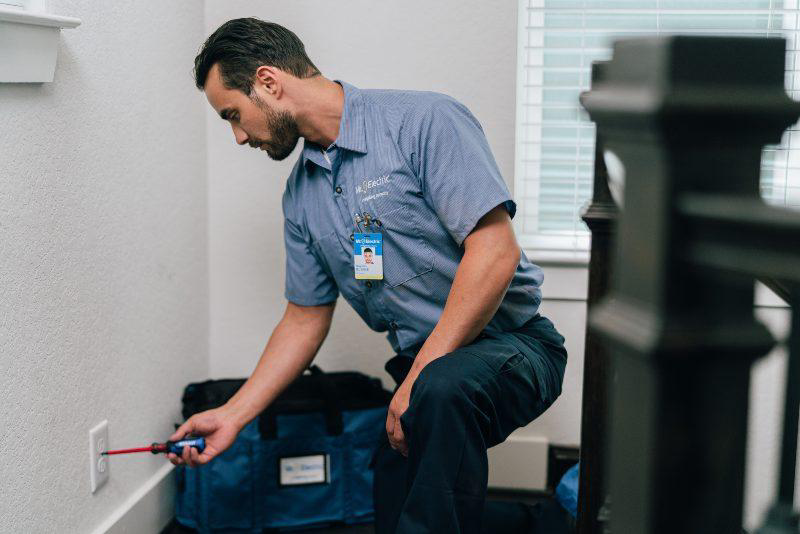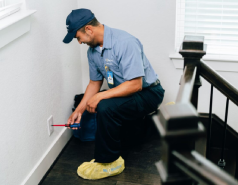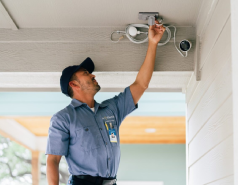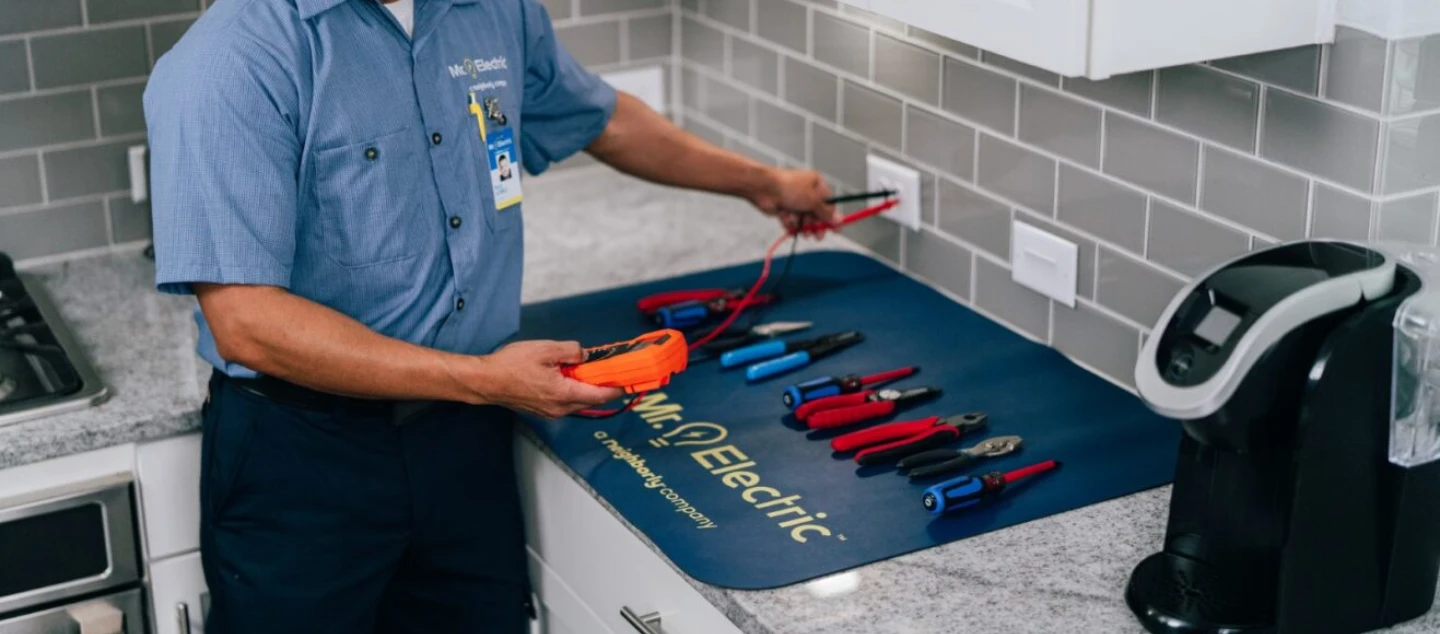Mr. Electric of Central Iowa puts our customers’ safety and satisfaction first on every project. This commitment to quality service includes home wiring updates in Des Moines, IA households with outdated wiring and other issues. Installing adequate wiring in a home goes beyond safety. A wiring installation also enhances a household’s functionality while making it more reliable and able to keep up with today’s increasing residential power needs. Your home’s wiring is seldom inspected after a technician installs it, so it might need updating. Updating home electrical wiring is especially important in homes over 40 years old. Our wiring updates reduce the risks of tripped breakers, electric shocks, and residential fires.

How Do I Know if My Wiring Needs Updating?
Your home’s electrical system may display one or more of many possible signs indicating it’s time to update your home’s electrical wiring. Mr. Electric of Central Iowa has helped countless homeowners with upgrading electrical wiring in their old homes with quick, efficient service and years of industry expertise. We also understand the latest electrical code updates and complete wiring jobs to comply with them. The following are examples of signs you need to update the electrical wiring in your home:
You Have Old House Wiring
Rewiring a house’s electrical system is a large and complex project. Fortunately, electrical experts like Mr. Electric of Central Iowa don't always need to replace an old home's wiring completely. However, some of its wiring will typically need to go. For instance, aluminum wiring you might find in homes built in the 1960s and 1970s are well-known safety hazard. Other examples of hazardous wiring include knob and tube wiring in pre-1930s homes and non-metallic wiring in homes from the 1940s and 1950s. We also replace frayed wires and loose connections from botched do-it-yourself projects or wear and tear over time.
You Have Ungrounded, Two-Pronged Outlets
Mr. Electric of Central Iowa has seen various signs of an outdated electrical system, one clear sign being ungrounded, two-pronged outlets. These outlets are a significant safety hazard, endangering your family and your electronics. Because of their lack of proper grounding, a two-pronged outlet’s electrical excesses have nowhere to go but into a device or person in contact with it. Even having a surge protector may not protect you and your devices from electrical excess. You can reduce shock risks quickly and easily by having our technicians install three-pronged outlets and grounded wires.
You’re Missing GFCIs
You can identify outlets with GFCIs by the “Test” and ”Reset” buttons on their receptacles. GFCIs protect your family and devices against shock in areas with high moisture around your home. The current electrical code requires GFCIs in kitchens, bathrooms, utility rooms, laundry rooms, spa or pool areas, garages, unfinished basements or crawlspaces, and other areas. Generally, you need GFCIs in all electrified areas outside your home as well. You risk a shocking experience if you don’t have these inexpensive and easy-to-install devices in these residential areas.
You’re Missing AFCIs
AFCIs are an essential way to ensure safety and reliable energy use throughout your home. This technology prevents fire because it acts like a circuit breaker, disconnecting when a potentially dangerous arc occurs. The electrical code requires AFCIs in bedrooms in all 50 states. Some states require homeowners to have AFCIs in all circuits throughout their homes.
You Have Inadequate Appliance Outlets
Not every outlet is the same in your home. For example, outlets for appliances like ovens, washers, and dryers need to safely draw higher amounts of electricity to run them to their best performance. Home appliances didn’t always require special plugs, but today’s appliances require a 240-volt outlet for each heavy-duty appliance. You’ll find three-pronged plug wiring for older electrical systems. Most of the latest 240 plugs include four prongs to improve safety because of the ground wire addition.
Your Home’s Electrical Panel is Inadequate
Do you know how many amps power your home? 60-amp breaker wiring was sufficient for homes a couple of decades ago, but today’s houses typically need 100 to 200 amps to successfully power all electronics and appliances people use simultaneously. These devices include refrigerators, air conditioners, flat-screen televisions, and mobile devices. Installing upgraded breaker box wiring is the best way to meet your home’s increasing energy needs.
Residential & Commercial Services
-

Electrical Safety
Learn more Electrical SafetyElevate your electrical safety with our range of services, from inspections to surge protection
-

Repair
Learn more RepairRepairs including lighting and electrical, should be performed by a professional electrician
-

Installations
Learn more InstallationsTrust our professionals for all your installation needs including panel upgrades, EVSE, and more
-

Lighting
Learn more LightingFrom ballast & bulb replacement to commercial, bathroom & kitchen lighting, we’ve got you covered

Join Our Team

Your Source for Local Home Service Experts
Neighborly brands repair, maintain, and enhance properties — to make life easier and more enjoyable for homeowners. Our consistency and quality work are the basis for everything we do, and are what make us a leader in the home services space, as we constantly strive to "be so remarkable, we become a beloved household name."






